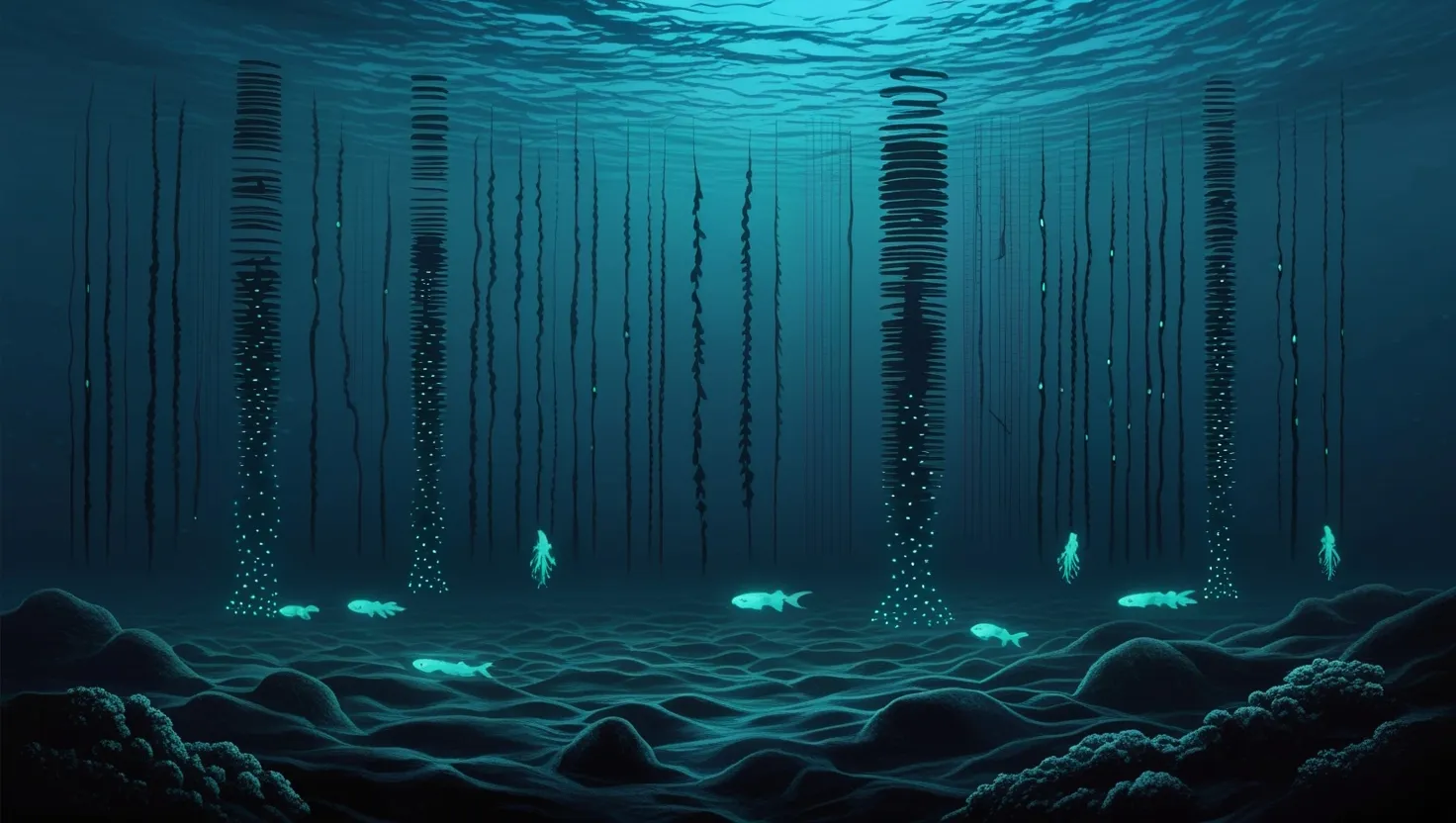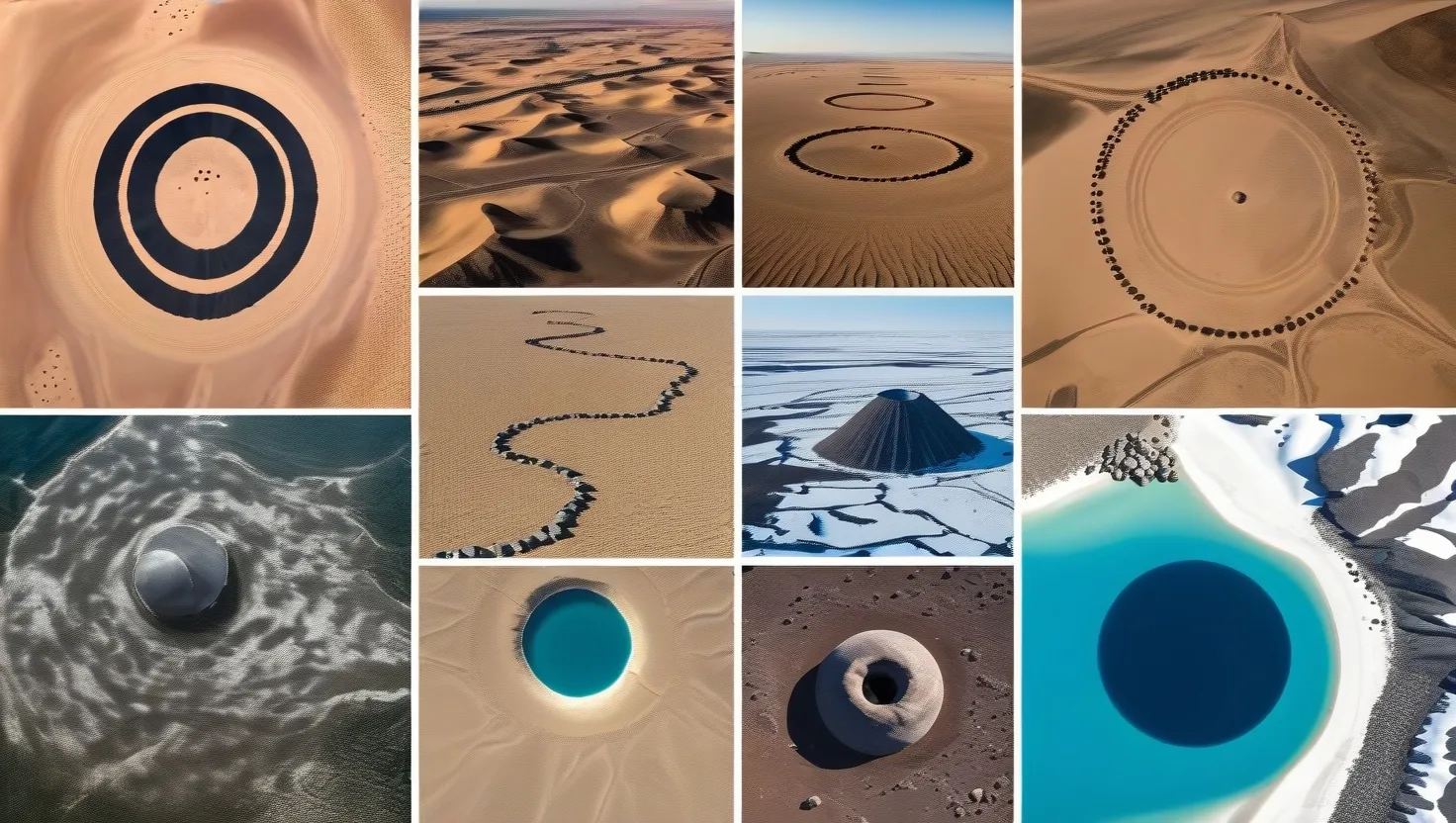The vast expanse of our planet’s oceans has long captivated the human imagination, but it’s only in recent years that we’ve begun to truly grasp the complexity and importance of the deep sea. As we venture further into the abyss, new discoveries are reshaping our understanding of marine ecosystems and their global impact. Let’s dive into seven recent advances in deep ocean research that are making waves in the scientific community.
Imagine a world hidden beneath the waves, where layers of marine life rise and fall in a daily dance. These are the sound-scattering layers, a phenomenon that’s revolutionizing our comprehension of marine ecosystems. These layers, composed of various organisms from tiny zooplankton to small fish, create a distinct acoustic signature that can be detected by sonar. Recent studies have revealed that these layers play a crucial role in the ocean’s food web and carbon cycle.
As these layers migrate vertically each day, they transport massive amounts of carbon and nutrients throughout the water column. This movement, known as diel vertical migration, is one of the largest animal migrations on Earth. The implications of this discovery are far-reaching, affecting everything from fisheries management to climate change models.
“The sea, once it casts its spell, holds one in its net of wonder forever.” - Jacques Cousteau
But what drives this daily migration? And how does it impact the broader marine ecosystem?
Deeper still, at the bottom of the ocean where sunlight never reaches, lies another marvel of nature: hydrothermal vents. These underwater geysers spew superheated, mineral-rich water into the surrounding ocean, creating oases of life in the most unlikely places. Recent research has shed new light on the intricate food webs that form around these vents and the unique energy flow that sustains them.
Unlike most ecosystems on Earth that rely on sunlight as their primary energy source, hydrothermal vent communities are fueled by chemosynthesis. Bacteria harness the chemical energy from the vent fluids to produce organic matter, forming the base of a food web that supports a diverse array of specialized organisms. This discovery has expanded our understanding of life’s potential in extreme environments and has implications for the search for life on other planets.
As we continue to explore the depths, we’re confronted with a sobering reality: human impact reaches even the most remote corners of our planet. The discovery of microplastic accumulation patterns in the deep sea serves as a stark reminder of our far-reaching influence. Recent studies have found microplastics in the guts of deep-sea organisms and embedded in seafloor sediments thousands of meters below the surface.
These findings raise important questions about the long-term effects of plastic pollution on deep-sea ecosystems. How do these tiny plastic particles affect the health of marine organisms? And what are the potential consequences for the broader ocean food web and, ultimately, human health?
Moving from the visible to the invisible, let’s consider the abyssal plains - vast, flat areas of the deep ocean floor that cover more than half of the Earth’s surface. Recent research has revealed fascinating insights into the carbon cycling mechanisms in these seemingly barren landscapes. Contrary to previous assumptions, these areas are far from inactive.
Scientists have discovered that abyssal plains play a crucial role in the global carbon cycle. Organic matter that sinks from the surface is processed by diverse communities of microorganisms and small animals living in the sediment. This process affects the amount of carbon that gets buried in the seafloor for long periods, potentially influencing global climate patterns.
“We know more about the surface of the Moon and about Mars than we do about [the deep sea floor], despite the fact that we have yet to extract a gram of food, a breath of oxygen or a drop of water from those bodies.” - Paul Snelgrove
How might our understanding of these abyssal carbon sinks influence climate change mitigation strategies?
In the inky blackness of the deep ocean, light takes on a whole new meaning. Bioluminescence, the production of light by living organisms, is a common feature in the deep sea. Recent studies have uncovered intricate bioluminescent communication networks among deep-sea creatures, challenging our perceptions of life in this dark realm.
From attracting mates to luring prey, bioluminescence serves a variety of functions in the deep. But perhaps most intriguing is its role in communication. Scientists have observed complex light displays that seem to convey specific messages between individuals and even across species. This discovery opens up new avenues for understanding deep-sea ecology and evolution.
Descending even further, we reach the hadal zone - the deepest parts of the ocean, including trenches that plunge more than 11,000 meters below the surface. Recent research has revealed fascinating adaptation mechanisms that allow organisms to survive in this extreme environment.
High pressure, near-freezing temperatures, and complete darkness present significant challenges for life. Yet, creatures in the hadal zone have evolved remarkable adaptations. From pressure-resistant proteins to specialized metabolic pathways, these organisms push the boundaries of what we thought possible for life on Earth. These discoveries not only expand our understanding of life’s resilience but also inform research into biotechnology and materials science.
“In the end, we will conserve only what we love; we will love only what we understand; and we will understand only what we are taught.” - Baba Dioum
What can these extreme adaptations teach us about the potential for life in other harsh environments, both on Earth and beyond?
Finally, let’s surface to consider how the deep ocean influences our world above. Recent studies have revealed significant changes in deep ocean currents, with potentially far-reaching effects on global climate patterns. These currents, part of the global ocean conveyor belt, play a crucial role in distributing heat, nutrients, and dissolved gases around the planet.
Changes in these currents could have cascading effects on weather patterns, marine ecosystems, and even terrestrial climate. As we grapple with the challenges of climate change, understanding these deep ocean processes becomes increasingly important for predicting and mitigating future impacts.
As we reflect on these recent advances in deep ocean research, it’s clear that our understanding of this vast, mysterious realm is rapidly evolving. Each discovery not only answers existing questions but also raises new ones, driving us to explore further and dig deeper. The deep ocean, with its unique ecosystems and global influence, holds keys to many of the challenges we face on the surface.
From the daily migrations of sound-scattering layers to the resilient life forms of the hadal zone, from the carbon sinks of the abyssal plains to the changing currents that shape our climate, the deep ocean is a world of wonder and importance. As we continue to explore and understand this final frontier on our own planet, we’re reminded of the interconnectedness of all Earth’s systems and the crucial role the ocean plays in maintaining the health of our blue planet.
What other secrets might the deep ocean hold? And how will our growing understanding of this vast realm shape our approach to global challenges in the years to come? As we stand on the brink of a new era of ocean exploration, these questions beckon us forward, inviting us to dive deeper into the mysteries of the blue abyss.






